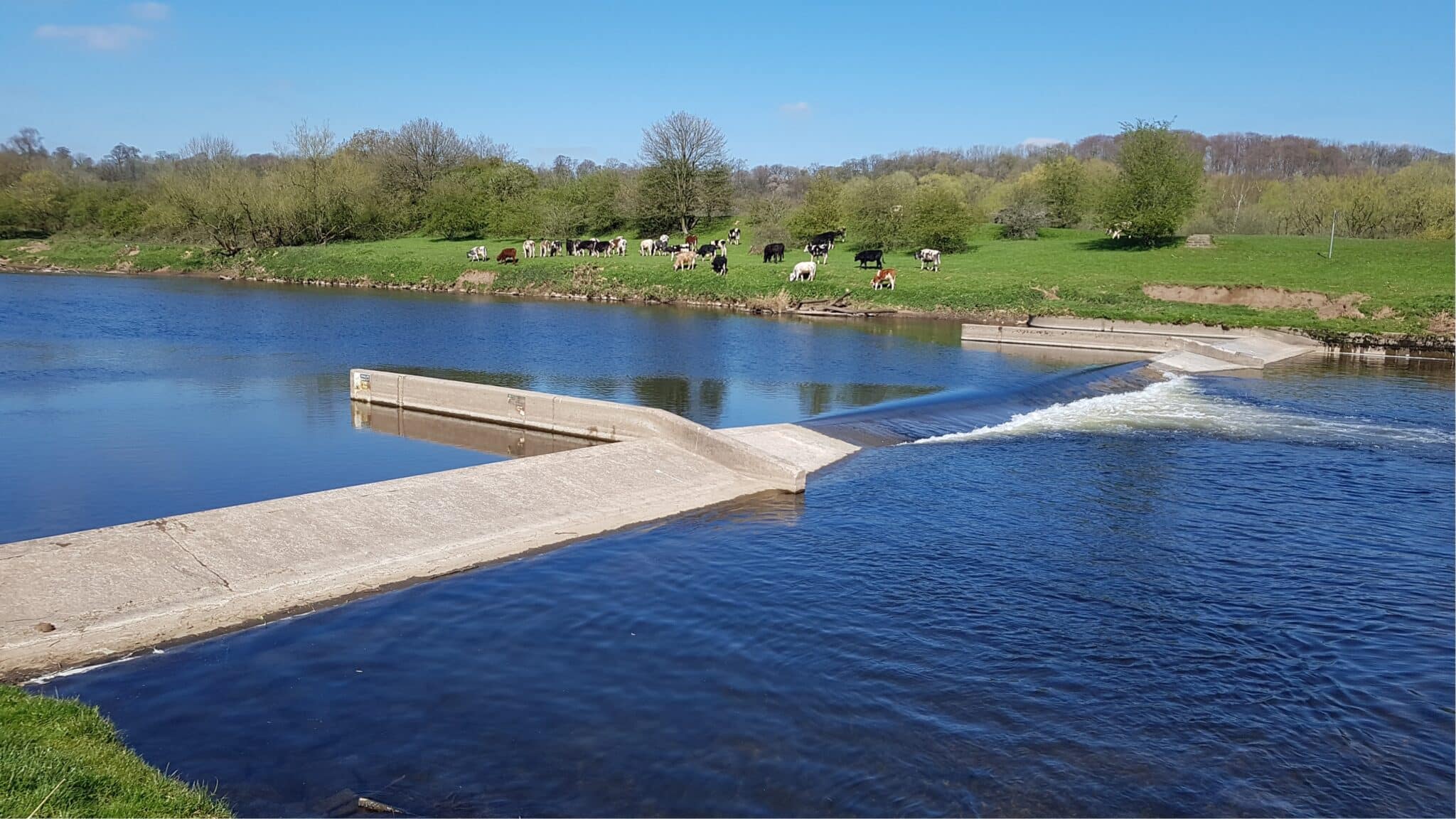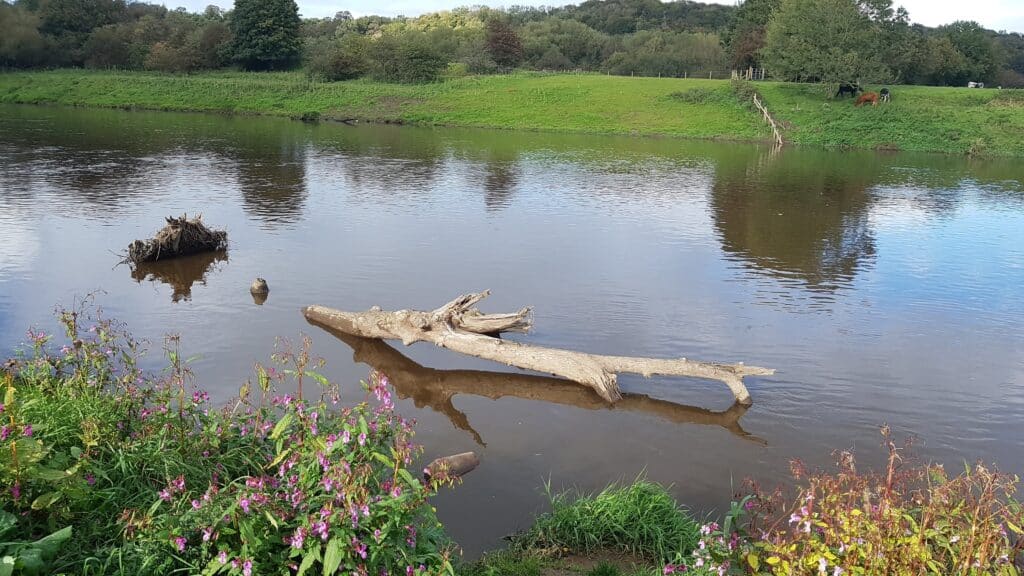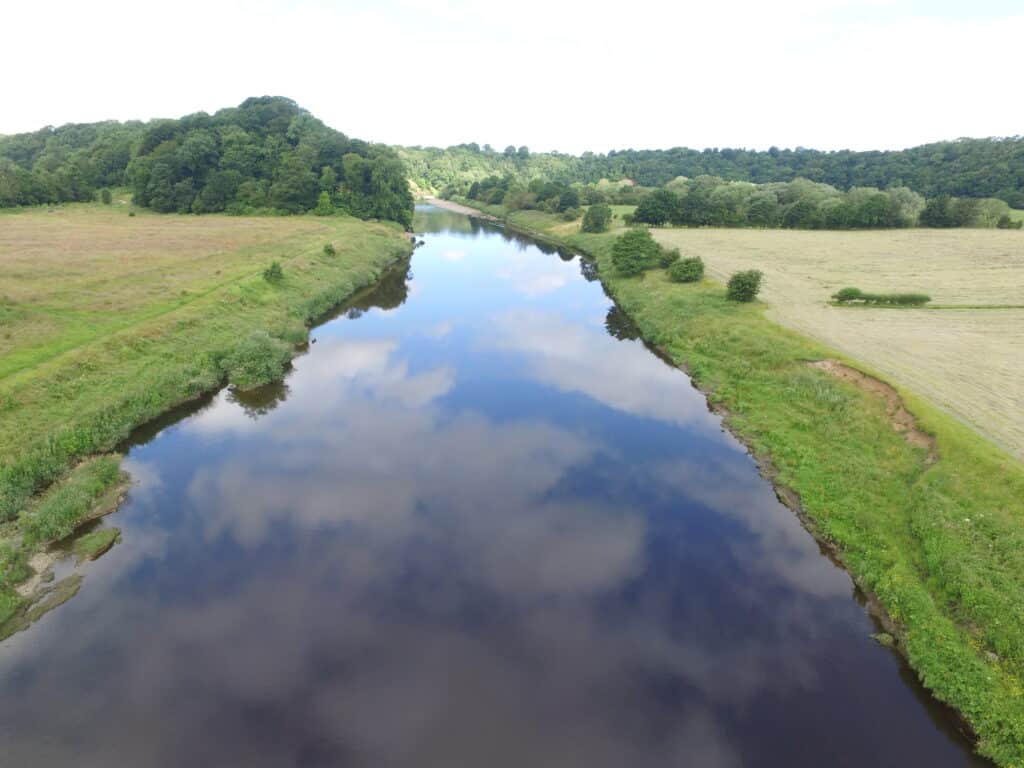
Samlesbury Weir Removal
Work is now complete on Samlesbury Weir! Samlesbury weir is the first river blocking barrier migratory fish face on the Ribble.

Completed with our contractors, Wade Group, this project was able to go ahead despite challenging circumstances. Including a global pandemic, national lockdowns, shortages of materials, and changes to working practices.
Our work here involved removing a redundant gauging weir adjacent to Brockholes Nature Reserve. Lowland rivers such as the Ribble at Samlesbury are often heavily influenced by human activity. Usually these are man-made barriers such as weirs which no longer provide any function. While Samlesbury Weir was a very low structure, fish were forced to expend energy to move upstream, especially those with poor swimming ability. Additionally, in low flows fish were exposing themselves to excessive predation.
Why remove barriers like samlesbury weir?
The removal of this barrier like this encourages natural river processes. Additionally, it allows the free movement for local and migratory fish species, and improves population resilience. Plus, a number of rare and endangered species, such as smelt, lamprey, and eels will benefit from the removal. Fish are not the only benefactor of this project as pre-works invertebrate surveys have shown. The upstream habitat is in poor condition due to the impoundment and the removal of the weir has great potential in improving habitat complexity. This improved habitat will lead to a greater abundance of invertebrates and a wider diversity of species, which will also benefit other riverine creatures which forage for them.
Going forward the Trust’s monitoring team will monitor the effects of our work. Their main aim is to see how the invertebrate and fish populations react to the change in the habitat. In fact, monitoring already shows an initial improvement in invertebrate numbers. Further to this some of our Ribble Life partner organisations will also be completing monitoring works in this area.
River restoration projects such as this involve the reversal of human influence by restoring the natural state and function of a river and, as the widest weir removal in England, will have maximum benefit to the Ribble, its tributaries, and the wildlife that are dependent on it.
This project is part of the Ribble Life for Water programme of works, with the funds for the project made available by the European Agricultural Fund for Rural Development.


